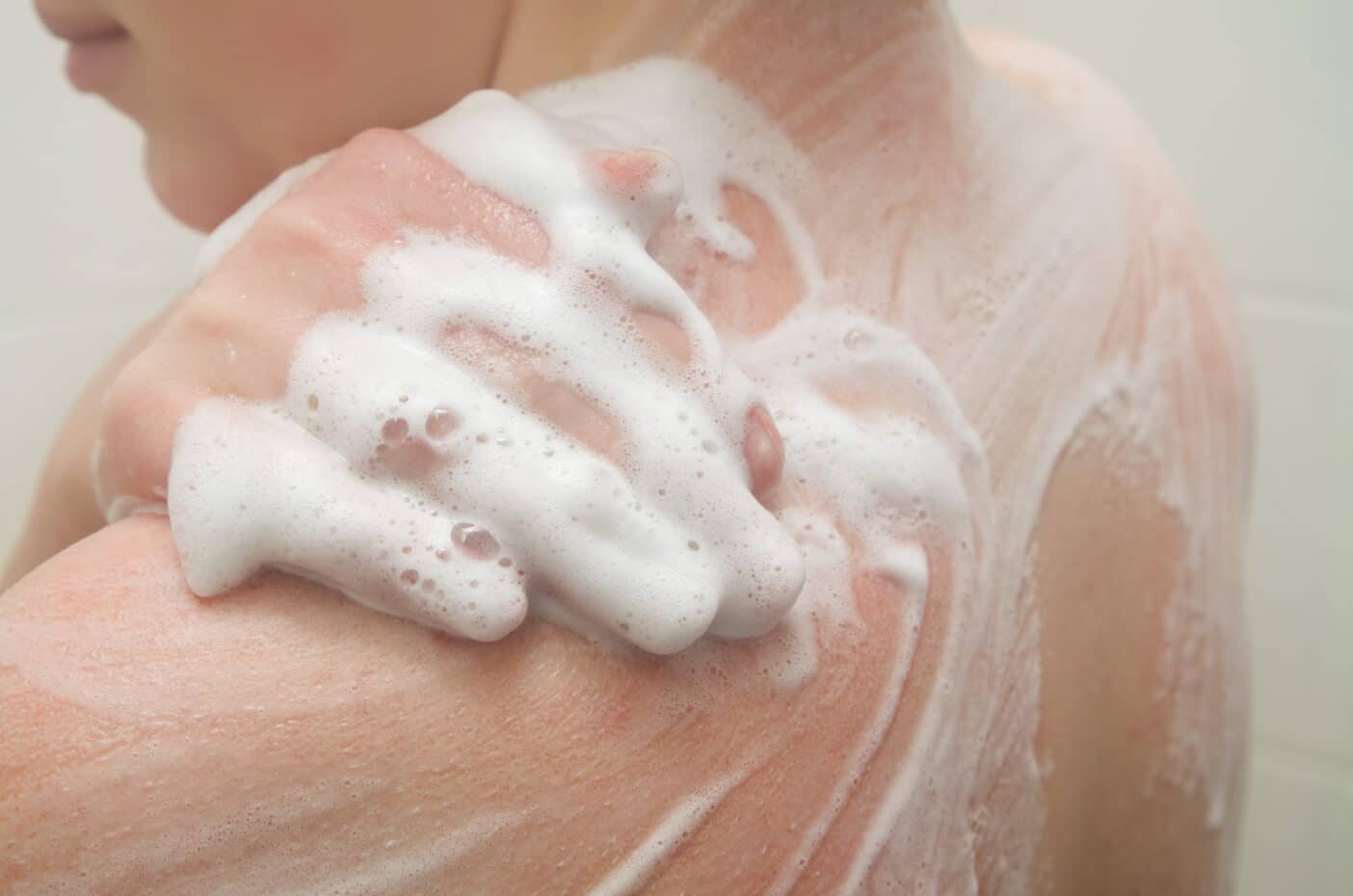Oil shower

Shower with nourishing oil and refreshing foam: the oil shower
Cleansing and care in one step, a clean and pleasantly relaxed, smooth skin feeling. Showering as an experience where well-being, convenience and function go hand in hand. These are the expectations we have of showering today.
The shower product should remove dirt and odours, protect the skin during showering, and nourish it with moisture and supple substances after showering. At the same time, it should form enough foam to be soft and easy to spread and also fulfil the association foam = purity. Daily showering, even several times, corresponds to the attitude to life, consequently the shower product should not dry out the skin or make it flaky even when used daily.
In shower products/soaps, surfactants dissolve grease and dirt particles from the skin. Conventional surfactant formulations usually foam well, but not only dissolve greasy dirt particles, but also lipids from the upper layers of the skin. Any cleansing can strip the skin of important lipid components and disrupt the skin’s moisture balance.
Oil baths or skin care oils applied after the shower can bring relief.
However, classic oil baths do not foam and do not show the desired cleansing and refreshing effect. With a skin care oil applied to the still slightly damp skin after showering, another care step is added.
But there are innovative formulations that, as 2-in-1 products, cleanse the skin, produce good foam and at the same time have a high oil content for refatting. The answer is: oil shower.
Oil shower: For whom?
An oil shower is ideal for people who shower a lot and frequently because it meets their demand for purity and well-being. Heavy sweating, whether caused by physical activity or climate, makes frequent showering essential.
Oil showering is ideal for dry and sensitive skin, skin prone to flaking, irritation and redness, skin that does not tolerate soap, stressed by swimming in sea or chlorinated water or spending time in the sun, skin that is rough and dry in winter due to heating air and thicker clothing.
It is also ideal for normal skin that prefers gentle, pampering, rich cleansing.
The oil shower strengthens the skin barrier, prevents lipids from being washed out and replaces them with refatting. The refatting substances prevent the skin from drying out during and after showering. They are absorbed by the skin during the cleansing process and counteract the degreasing caused by the surfactants and thus the damage to the skin barrier.
Foaming can be assisted with wash cloth, sponge, removing flakes at the same time. The skin is only gently patted dry so that the refatting effect on the skin can fully develop.
The high oil content is a challenge for the formulation
As the name suggests, the oil shower has a high content of oily components, up to 50%.
Rebalancing oils counteract the degreasing character of surfactants. Natural oils include sunflower, argan, avocado, grape seed, olive, lecithin, almond and coconut oil.
In conventional surfactant formulations, oils make foaming more difficult, reduce viscosity and promote phase separation.
Mild surfactants or special surfactant systems are required for the oil shower,
which do not attack the skin barrier and allow high oil contents with good foam formation at the same time.
They also allow the sparing use or even the omission of SLS/ SLES and PEG (sulphate- /PEG-free formulations) and thus contribute to skin compatibility.
Non-ionic surfactant combinations for the oil shower
In combination, different surfactants can complement each other in their strengths: dissolving dirt and functioning in a skin-compatible way.
A surfactant that does not have very pronounced skin compatibility but intensively dissolves dirt can, in combination with mild, skin-friendly surfactants, result in a product with good cleaning performance and skin compatibility.
Non-ionic surfactants are particularly mild, skin-compatible, leave the skin barrier intact and stabilise it, but foam less. A combination with anionic surfactants can be useful in this respect.
An example is the following surfactant combination:
INCI: MIPA-Cocoyl Sarcosinate (and) Polyglyceryl-3 Polyricinoleate (and) Polyglyceryl-3 Diisosterate (and) Polyglyceryl-3 Caprate.
The PEG-free and anhydrous surfactant concentrate combines anionic and non-ionic surfactants. It is specially formulated for use in water-free formulations such as oil shower, shower oil and facial cleansing formulations. It is clearly miscible with any oils in almost any concentration. The clear mixture of surfactant concentrate and oil changes to a classic O/W emulsion during application when diluted with water. Despite the high oil content, a relatively good foaming capacity is obtained.
Structured surfactant systems for the oil shower
Larger proportions of oil components in surfactant-based formulations are a challenge in terms of stability and foaming behaviour.
Structured surfactant systems offer a solution.
Such structures can absorb high oil contents (up to 50%). They produce nourishing, creamy textures, achieve good foaming, perform very well in hydration, smooth the skin, have rich sensorial properties and are ideal for the oil shower.
In many cases, they can do without potentially skin-irritating sulphates (SLS, SLES) and PEG; SLS/SLES can be replaced with glycolipids.
The structured surfactant system is based on a hydrophobic surfactant (INCI: Diethylhexyl Sodium Sulfosuccinate or Sorbitan Sesquicaprylate) and up to 50% oil.
The multilamellar vesicles are arranged in concentric bilayers of surfactant molecules. Such systems can suspend and stabilise large quantities of water-insoluble substances (oil droplets) and distribute them on surfaces when water is added.
Because the oil droplets are coated within the multilamellar vesicles, they do not interfere with foaming by the surfactants dissolved in the water phase.
The formulation is very mild.
While diethylhexyl sodium sulphosuccinate as a single substance can irritate the mucous membrane, the irritation potential of sorbitan sesquicaprylate has been shown in the Red Blood Cell Test to be as low as in mild baby shampoos.
Plus points of oil shower at a glance:
Oil shower is suitable for daily use.
It leaves a protective lipid film on the skin.
If desired, body lotion or body cream can still be applied after the shower.
Has a moisturising effect.
Improves the moisture balance of the skin.
Regenerates, stabilises the acid mantle.
Alleviates redness, irritation, dryness.
The principle of the oil shower also works for facial care.
Cosmacon rises to the challenge
High proportions of moisturising, nourishing oils in soft, stable, easy-to-disperse foam require intelligent surfactant combinations and novel surfactant systems. Cosmacon realises innovative formulations for the incomparable shower experience and modern skin cleansing. Contact us!
